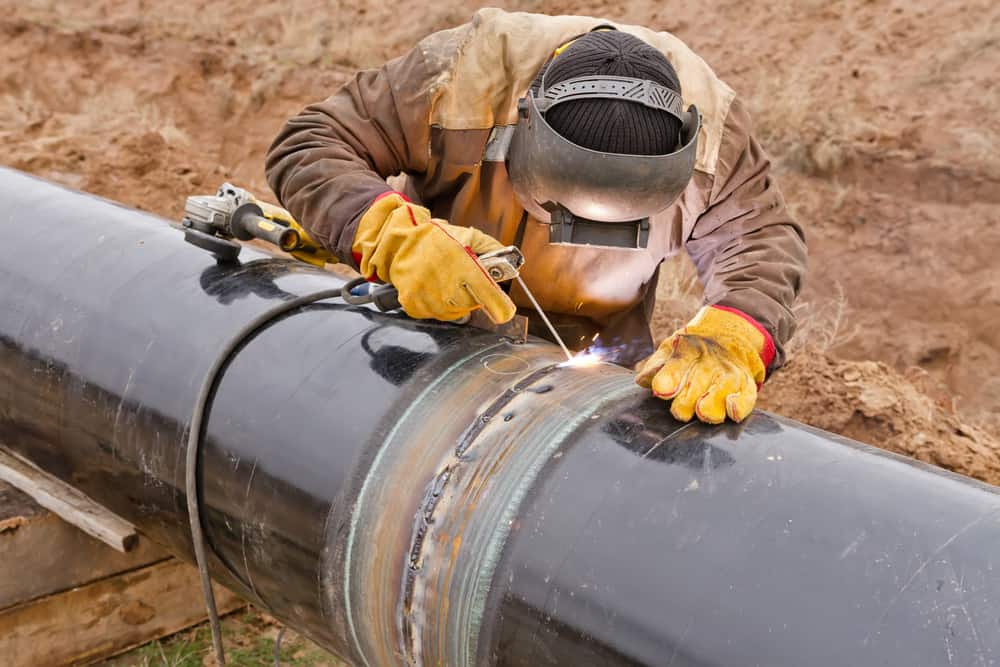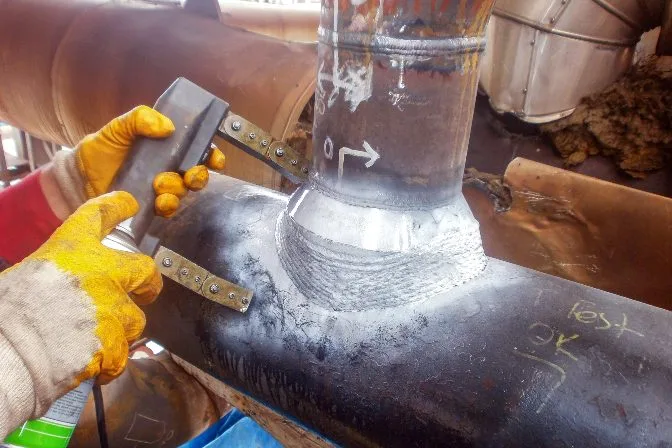Cost Effective Houston Welding Inspection Solutions for Your Construction Requirements
Cost Effective Houston Welding Inspection Solutions for Your Construction Requirements
Blog Article
Checking Out the Principles of Welding Evaluation: A Detailed Examination of Processes, Devices, and the Value of Quality Assurance in Welding Industries
Welding examination works as a keystone in the maintenance of safety and security and architectural stability throughout various sectors. By examining the vital procedures and tools utilized in these inspections, one can value the intricate balance between quality control and conformity with established standards from companies such as AWS and ANSI. The techniques employed, including visual and non-destructive testing strategies, are essential in spotting blemishes that can endanger the resilience of bonded frameworks. Understanding the ramifications of these practices elevates important inquiries concerning their efficiency and the future direction of quality control in welding.
Significance of Welding Evaluation
Welding examination plays an important duty in ensuring the integrity and security of welded frameworks. It acts as an organized strategy to assessing weld top quality, determining possible issues, and making sure compliance with well established requirements and specs. The value of welding examination extends beyond mere adherence to policies; it is pivotal in protecting human lives and safeguarding financial investments in facilities.
Defective welds can cause devastating failures, causing significant financial losses, injury, or death. As a result, extensive assessment procedures are vital to spot issues such as insufficient infiltration, porosity, or cracks prior to they intensify right into vital failures. Additionally, efficient welding inspection contributes to the total performance and longevity of structures, guaranteeing that they can stand up to the problems for which they were designed.
Additionally, the implementation of welding assessment cultivates a society of quality and responsibility within the welding market. By prioritizing evaluation, companies show their dedication to excellence, thereby improving their online reputation and competitiveness in the marketplace. Ultimately, welding inspection is not just a procedural action however a basic component of engineering stability and safety assurance, crucial for the successful implementation of welding tasks across various markets.
Trick Examination Processes
A thorough method to welding evaluation entails numerous crucial procedures that are necessary for guaranteeing weld quality and structural honesty. The first critical procedure is visual evaluation, which enables assessors to determine surface flaws such as cracks, porosity, and inappropriate grain look. This technique works as an initial examination to ensure that the weld fulfills specified criteria.

Furthermore, damaging testing may be carried out on example welds to assess their mechanical residential or commercial properties and performance under stress and anxiety. This process entails impact, tensile, and tiredness testing to verify that the weld can endure operational problems.
Last but not least, documentation and reporting are critical parts of the examination process. Keeping exact documents of examinations, observations, and test results aids make certain compliance with market criteria and promotes consistent renovation in welding methods. Jointly, these vital processes create the foundation of reliable welding assessment and quality control.
Devices for Weld Assessment
Numerous tools are vital for effective weld evaluation, each designed to analyze various facets of weld high quality and performance. Amongst one of the most widely utilized are visual assessment devices, consisting of magnifying glasses and borescopes, which make it possible for examiners to identify surface flaws such as splits, porosity, and inappropriate combination.
In addition, ultrasonic testing (UT) tools is vital for spotting inner imperfections. my response This device employs high-frequency acoustic waves to expose discontinuities within the weld, making certain the stability of the product. Radiographic testing (RT) tools, which make use of X-rays or gamma rays, in a similar way give understanding right into the internal structure of welds, allowing for the identification of gaps or additions.
For accurate measurements, calipers and assesses play a considerable role in figuring out weld dimensions and guaranteeing adherence to defined resistances. Firmness testers examine the mechanical properties of the weld, ensuring it satisfies efficiency criteria.

Methods for Evaluating Quality
How can the high quality of welds be dependably assessed? A range of strategies are employed to evaluate weld honesty and make certain adherence to defined standards. Aesthetic examination is one of the most fundamental technique, permitting assessors to identify surface area defects such as fractures, porosity, or damaging. This non-destructive strategy offers as a first evaluation prior to advanced techniques are made use of.
Ultrasonic screening (UT) is another prominent strategy that uses high-frequency acoustic waves to discover internal flaws within the weld. Houston Welding Inspection. This method gives a comprehensive sight of the weld's integrity without compromising its architectural honesty. In enhancement, radiographic testing (RT) uses X-rays or gamma rays to disclose inner flaws, offering thorough insights right into weld top quality
Magnetic particle screening (MT) works for detecting surface area and near-surface stoppages in ferromagnetic materials, using magnetic fields and colored particles to highlight problems. Color penetrant screening (PT) can be employed to uncover surface-breaking defects by applying a color that seeps into splits and is ultimately revealed.
Conformity With Industry Criteria
Compliance with sector criteria is important for guaranteeing the top quality and safety of bonded frameworks. These standards, established by organizations such as the American Welding Culture (AWS) and the American National Standards Institute (ANSI), give standards that govern the welding procedure, materials, and assessment methods. Complying with these requirements not only guarantees the structural stability of welds however likewise reduces dangers connected with failures that could result in devastating consequences.

Welding examiners are entrusted with validating compliance with these standards throughout the welding process (Houston Welding Inspection). This involves analyzing welding procedures, keeping an eye on welder qualifications, and performing complete inspections of the final product. Non-compliance can lead to considerable financial effects, task hold-ups, and damages to a business's track record
Additionally, compliance fosters a society of quality assurance within the organization. By developing clear expectations and benchmarks, firms can maintain consistency in their outcome and enhance general performance. Regular training and updates on criteria are browse this site necessary to maintain workers informed and experienced, making certain that all aspects of welding procedures meet or go beyond regulatory demands. Ultimately, commitment to industry standards serves as a structure for quality in the welding market, promoting security and reliability in bonded structures.
Conclusion
Finally, welding examination works as an important element in keeping the security and stability of bonded frameworks. Through the execution of key inspection processes and the application of advanced devices and techniques, prospective issues can be recognized and dealt with effectively. Adherence to market requirements guarantees compliance and promotes a culture of quality within the welding industry. Eventually, strenuous assessment practices not only secure human lives yet likewise boost the durability and efficiency of welded constructions.
Additionally, the application of welding examination cultivates a society of quality and responsibility within the welding sector. Ultimately, welding assessment is not simply a procedural action yet a fundamental element of design stability and safety and security guarantee, essential for the effective implementation of welding tasks across numerous industries.
An extensive strategy to welding assessment involves a number of crucial procedures that are necessary for making certain weld quality and structural honesty. These requirements, established by companies such as the American Welding Culture (AWS) and the American National Requirement Institute (ANSI), give standards that control the welding process, products, and examination procedures.Welding assessors are entrusted with validating compliance with these criteria throughout the welding redirected here procedure.
Report this page